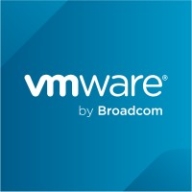


VMware Aria Automation and HashiCorp Terraform are both prominent cloud automation solutions. Based on user reviews, HashiCorp Terraform has the upper hand due to its extensive feature set and superior ROI despite VMware's higher satisfaction in support.
Features: VMware Aria Automation is valued for its integration capabilities, comprehensive policy management, and ease of deployment. HashiCorp Terraform offers multi-cloud support, an extensive provider ecosystem, and robust infrastructure automation capabilities.
Room for Improvement: VMware Aria Automation could improve scalability, enhance third-party integrations, and refine cost efficiency. HashiCorp Terraform needs a better user interface, improved state management, and more consistent support.
Ease of Deployment and Customer Service: VMware Aria Automation distinguishes itself with smoother deployments and reliable customer service. HashiCorp Terraform, while powerful in deployment, has a steeper learning curve and inconsistent support experiences.
Pricing and ROI: VMware Aria Automation has higher upfront costs but provides value through comprehensive support. HashiCorp Terraform presents better ROI with its open-source model and lower setup costs, although potential investments in training and support may be necessary.
Everything we've gained from it makes my job easier day after day, and I see value in it as an engineer.
Microsoft Intune not only saves costs by reducing the number of personnel needed but also offers a comprehensive solution for managing laptops, applications, security, individual access, and enrollment.
Importantly, when someone leaves the company, it helps protect document access on their devices.
When a support ticket is submitted, it directly reaches someone with Intune support expertise.
When I contacted Microsoft, they had the same expertise, if not more, which is phenomenal because I felt heard and my problem was solved.
Sometimes, the support provided is excellent, and the representative is knowledgeable, while other times, the service needs improvement.
I would rate the HashiCorp technical support an eight on a scale of one to ten, where ten is the best.
They provide mail IDs, a portal, and contact numbers for assistance.
We never had major issues to report or request support.
The scalability of Microsoft Intune is ten out of ten.
Ideally, we want to automatically segregate devices based on user properties like primary use, but currently, dynamic groups seem limited to device properties.
It supports organizations with 200 endpoints and those with more than 15,000 endpoints.
Terraform runs when changes occur.
Scalability is effective, and I would rate it a ten out of ten.
We have not experienced downtime, bugs, or glitches.
It appears Microsoft Intune undergoes changes without informing customers.
Microsoft Intune has been very stable.
I can choose a stable version and decide whether to upgrade based on its performance.
HashiCorp Terraform is extremely stable.
Stability has been a concern, particularly around backside stability with unexpected terminations.
Features like unlocking devices sometimes fail, and the support offered for other operating systems is insufficient.
There are communication issues, so you might start working with a feature without knowing if it will be deprecated six months from now.
Many third-party companies offer single-pane-of-glass reporting that shows you what your update environment looks like, how your patch is doing, application status, etc., but Intune's reporting is not intuitive.
There are potential improvements in the backend stability of HashiCorp Terraform.
How quickly can it be integrated into my Terraform scripts ensuring rapid availability of resources is crucial.
There is a challenge where our organization is recommending a specific OS, which is currently not supported by HashiCorp Terraform.
It operates for both of my products, however, as a product, it is complicated to integrate and automate with other products.
Introductory professional services, like a fast-track service, were included with our E5 membership, and there have been no additional costs.
The Intune suite and add-ons, such as batch management and remote help, are costly.
It costs approximately forty euros per user per month.
I use the open-source version of Terraform, so there is no cost for me.
Intune excels in configuration and compliance management for Windows 10, ensuring devices receive timely updates and adhere to organizational standards.
Dynamic groups allow us to set conditions for automatic membership, eliminating the need for user intervention or manual review and ensuring a seamless workflow.
Windows Autopatch is the most valuable because it removes the burden of patch management.
Terraform modules make it easier to manage complex infrastructure and code within an organization.
Terraform's infrastructure as a code tool facilitates deploying code on tools, and once configured with AWS and local Terraform systems, it can be reused multiple times without much issue.
If changes are needed, I track who did what because my Terraform scripts are version-controlled.
It helps us automate the workflow of creating many VMs and the TensorFlow key method.
We have strong regulations for maintaining compliance and mitigating risks with this product.
| Product | Market Share (%) |
|---|---|
| Microsoft Intune | 9.4% |
| VMware Aria Automation | 5.4% |
| HashiCorp Terraform | 3.9% |
| Other | 81.3% |



| Company Size | Count |
|---|---|
| Small Business | 116 |
| Midsize Enterprise | 46 |
| Large Enterprise | 152 |
| Company Size | Count |
|---|---|
| Small Business | 25 |
| Midsize Enterprise | 7 |
| Large Enterprise | 23 |
| Company Size | Count |
|---|---|
| Small Business | 32 |
| Midsize Enterprise | 24 |
| Large Enterprise | 130 |
Microsoft Intune provides centralized management of mobile devices and applications, ensuring security, compliance, and productivity through integration with Microsoft services like Microsoft 365 and Azure Active Directory.
Organizations use Intune for managing mobile devices and applications, enhancing security and compliance across platforms. With features like single sign-on, conditional access, and zero-touch deployment via Autopilot, it facilitates efficient operations. Intune's scalability, easy enrollment, and capabilities such as remote wipe support diverse device management, offering robust data protection and efficient operation. Despite its features, improvement areas include reporting, compatibility with non-Microsoft devices, and better support for macOS and Linux devices.
What are the key features of Microsoft Intune?
What benefits should users look for in reviews?
In industries such as finance, healthcare, and education, Microsoft Intune is implemented to ensure secure and compliant device management. Companies leverage its capabilities to deploy security policies and manage both corporate-owned and BYOD environments, facilitating a unified approach to data protection and compliance.
HashiCorp Terraform is a powerful configuration management solution that aims to provide users with the ability to maximize the ease with which users can perform their configuration management operations. It makes it so that organizations can reliably configure and manage their infrastructure. Terraform is a tool that transforms every user into an administrator and project collaborator. Businesses that use it have at their command a solution that they can use for the entire lifecycle of their infrastructure.
HashiCorp Terraform Benefits
Some of the ways that organizations can benefit by choosing to deploy HashiCorp Terraform include:
HashiCorp Terraform Features
Reviews from Real Users
HashiCorp Terraform is a highly effective solution that stands out when compared to many of its competitors. Two significant advantages it offers are its ability to help users create deployment pipelines that make the deployment process simple and its ability to recover infrastructure fully should something delete or damage it.
Patryk G., the chief technology officer at Translucent Computing Inc, writes, “Furthermore, Terraform enables the creation of a deployment pipeline using tools, such as Atlantis, which automates the process of scanning and deploying the code. This streamlines the deployment process and adds features, such as auditing, risk management, and security scanning to the deployment process. Terraform provides a more organized and secure way of managing infrastructure, compared to the traditional ad-hoc method.”
Rakib M., the chief technology and strategy officer at the White House, says, “One of the other major features of terraform is its ability to act as a Disaster Recovery tool. Since terraform is an Infrastructure-As-A-Service tool, it can be used as part of the rest of the DR toolset to restore affected infrastructure to its original state without any variation.”
VMware Aria Automation is a cloud management tool that allows companies to simplify their cloud experience through a modern automation platform. The solution is designed to deliver self-service clouds, multi-cloud automation with governance, and DevOps-based security and infrastructure management. It helps organizations improve IT agility, efficiency, and productivity through its various features.
VMware Aria Automation has multiple use cases that include the following:
VMware Aria Automation Features
VMware Aria Automation has various features that allow users to easily perform operations. Some of the solution's capacities include:
VMware Aria Automation Benefits
VMware Aria Automation offers its users various benefits. Some of the biggest advantages that the solution brings to companies that utilize it include:
Reviews from Real Users
Awais J., CTO/CEO at a tech services company, likes VMware Aria Automation because it saves a lot of time, provides more visibility, and has extensive automation capabilities.
An IT consultant at a government rates VMware Aria Automation highly because the product gives you flexibility to analyze and consume resources.
We monitor all Configuration Management reviews to prevent fraudulent reviews and keep review quality high. We do not post reviews by company employees or direct competitors. We validate each review for authenticity via cross-reference with LinkedIn, and personal follow-up with the reviewer when necessary.